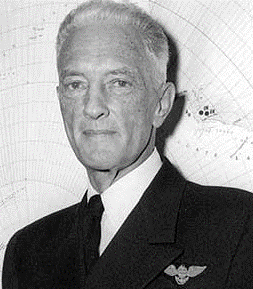We live in such a fascinating time of discovery. From busting the genome to the Hubble space telescope, raising digital generations, tele-medicine, smart phones, smart refrigerators, and cars that park themselves. The list of things that we take for granted that didn’t exist a few short years ago is extensive.
The people that drove these innovations were explorers. Most had some extraordinary things in common that helped them produce extraordinary results.
Characteristics of the Explorer’s Mindset
What kinds of people chose a life of exploration, challenge, and discovery? According to the Moller Institute of Churchill College in the UK, it centers around these seven characteristics & leadership approaches:
1. Personal Resilience
2. Preparedness
3. Leading Innovation
4. Ambiguity Tolerance
5. Approach Orientation
6. Tolerance
7. Perspective Taking
1. Personal Resilience
Personal resilience is the speed at which a person bounces back from disappointments, their tendency to see things as within their control or influence, and their fundamental belief in their ability to overcome obstacles and thrive during adversity. We tend to have certain beliefs about ourselves and the world that influence our base level of personal resilience. It needs to be nurtured in order to be sustained during challenging periods such as our recent economic challenges.
2. Preparedness
Being well-prepared, organized, and goal orientated, is a trait that underpins the effectiveness of a leader. Preparedness is also indicative of the extent to which someone tends to follow through on important verbal commitments and see projects through until completion. Those with lower levels of preparedness tend to enjoy the pressure of the ‘last minute’ more than those who are higher in this trait.
3. Leading Innovation
The ability and desire to lead others to innovate is another key aspect of the explorer mindset. This most often comes from a combination of attraction to innovation and an ability to motivate the behavior in others. The ability of leaders to inspire others to try new ways of working, be courageous, and innovate, is leading characteristic of the explorer mindset.
4. Ambiguity Tolerance
Ambiguity tolerance is the extent to which ambiguity is seen as desirable due to it being perceived as challenging and interesting. Leaders who have a high ambiguity tolerance are likely to be attracted to complex thinking and exposure to unfamiliar situations. Those with high levels of ambiguity tolerance tend also to be relatively at ease in situations with high levels of uncertainty. They will tend to be more comfortable than most in executing a strategy in ambiguous environments, (like the ones we face today.)
5. Approach Orientation
Approach orientation is a component of motivation. It is a habitual way of seeing things and tends to influence aspects of life such as what you pay attention to, what you value, the approaches you choose, and how you feel when you succeed or fail. Approach orientation is the tendency to identify and pursue opportunities, which is a key aspect of the Explorer Mindset.
6. Risk Tolerance
Tolerance for risk strongly influences perception in decision making. Risk Tolerance (RT) measures sensitivity to risk and the extent to which we are likely to show risk avoidant behavior. Investment analysts use RT to gauge their client’s comfort level with market variability. Those with a higher RT are more focused on exploring opportunities than avoiding potential risks. They are not motivated by maintaining the status quo and have a higher tolerance for working towards something when the outcome is uncertain.
7. Perspective Taking
Perspective taking is putting oneself in another’s shoes and seeing things from alternative perspectives. The ability to do this for a diverse set of stakeholders is a core characteristic of leadership. Those high in perspective taking tend to be naturally empathetic and see things from other perspectives. It is important to verify the accuracy of this perception with others through diligent interaction and questioning.
Which of These Principles Apply to You or Someone in Your Own Life?
Meet My Father the Explorer, (What a handsome cuss)
My father, Leon J. Hubert, was an explorer. And I want to honor his memory by sharing some fascinating information about his explorer’s mindset. Like many of his generation, he served his country in the US Navy and helped to win World War II. He was a Chief Petty Officer on the aircraft carrier USS Philippine Sea.
Shortly after the end of WWII, Navy Secretary James Forrestal appointed Rear Admiral Richard Byrd as officer in charge of Antarctic Developments Project. It was Admiral Byrd’s fourth Antarctic expedition, code named Operation Highjump, it was and to this day still is, the largest Antarctic expedition ever organized.


Leon J. Hubert Adm. Richard E. Byrd
Unlike Byrd’s previous expeditions, Operation Highjump’s goals were primarily of a military nature. Instructions were for twelve ships and several thousand men to make their way to the Antarctic rim to:
-
Train personnel and test material in the frigid zones
-
Consolidate & extend American sovereignty over the largest practical area of the Antarctic continent
-
Determine the feasibility of establishing and maintaining bases in the Antarctic
-
Develop techniques for maintaining air bases on ice and applicability to operations in Greenland
-
Amplify knowledge of hydrographic, geological, meteorological, & electromagnetic conditions

